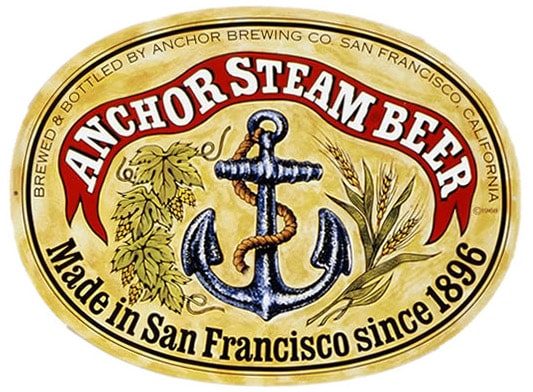Analysis Of Nestlé (NESN) Sales: The Role Of Pricing Strategies In Coffee And Cocoa

Table of Contents
Nestlé's Coffee Sales: A Deep Dive into Pricing Strategies
Nestlé's coffee business is a complex ecosystem encompassing various brands and pricing approaches. Their success hinges on a sophisticated understanding of consumer preferences and market dynamics.
Premiumization and its impact on sales:
Nestlé leverages premium coffee brands like Nespresso and Starbucks at Home to command higher prices and cater to affluent consumers seeking a superior coffee experience. This premiumization strategy significantly impacts sales and profitability.
- Examples of premium offerings: Nespresso's single-serve capsules, Starbucks at Home's whole bean coffees and ready-to-drink beverages.
- Pricing comparison with competitors: Nespresso generally commands higher prices than comparable single-serve coffee options, leveraging its brand image and superior perceived quality. Similarly, Starbucks at Home products are priced at a premium compared to mass-market options.
- Sales figures for premium brands: While exact figures are proprietary, reports indicate strong sales growth and high profitability for these premium brands, driving overall revenue for Nestlé.
- Consumer perception of value: Consumers are willing to pay a premium for convenience, quality, and the brand experience associated with Nespresso and Starbucks at Home, justifying the higher price points.
The role of brand image and sophisticated marketing campaigns in justifying premium pricing cannot be overstated. These brands are associated with luxury and convenience, successfully commanding a price premium in the market.
Mass-market coffee pricing and competition:
Nestlé also competes aggressively in the mass-market coffee segment with brands like Nescafé. Here, pricing strategies are far more competitive, focused on value and volume.
- Pricing strategies (e.g., promotional pricing, bundling): Nescafé utilizes various promotional pricing strategies, including discounts, multi-pack deals, and bundling with other Nestlé products to maintain market share and compete effectively on price.
- Impact of commodity price fluctuations: Fluctuations in green coffee bean prices directly affect Nescafé's production costs and, consequently, its pricing decisions. Nestlé employs hedging strategies to mitigate this risk.
- Market share analysis: Nescafé maintains a significant global market share, demonstrating the effectiveness of its mass-market pricing and distribution strategies.
- Competitive landscape: The mass-market coffee segment is highly competitive, with numerous private-label and other established brands vying for consumers' attention.
Sustainability and ethical sourcing as pricing factors:
Increasingly, consumers are willing to pay more for ethically sourced and sustainably produced coffee. Nestlé is incorporating this into its pricing and marketing.
- Examples of sustainable coffee initiatives: Nestlé is actively involved in various sustainability initiatives, including programs promoting fair trade and responsible farming practices.
- Consumer willingness to pay a premium for ethically sourced coffee: A growing segment of consumers is willing to pay a price premium for coffee certified as ethically sourced and sustainably grown.
- Impact on brand reputation and sales: By highlighting its sustainability efforts, Nestlé enhances its brand reputation and appeals to environmentally conscious consumers, potentially driving sales and justifying higher prices for certain product lines.
Nestlé's Cocoa Sales: Examining Pricing and Market Dynamics
Nestlé's cocoa business, encompassing chocolate and confectionery products, also reflects diverse pricing strategies across different market segments.
Chocolate pricing across different segments:
Nestlé offers a wide range of chocolate products, targeting various consumer segments with distinct pricing approaches.
- Examples of products in each segment: Mass-market brands like KitKat and Crunch, premium brands like Cailler and Lindt, and organic options.
- Price points: Price points vary drastically across segments, with mass-market chocolate being significantly cheaper than premium and organic options.
- Pricing strategies used in each segment: Mass-market relies on volume and competitive pricing, while premium segments leverage brand image, quality, and unique ingredients to justify higher prices.
- Market analysis: The chocolate market is diverse, with intense competition across all segments, demanding carefully tailored pricing strategies.
Impact of cocoa bean price volatility on Nestlé's pricing:
Fluctuations in global cocoa bean prices significantly impact Nestlé's profitability.
- Hedging strategies: Nestlé uses hedging strategies to mitigate the risk associated with volatile cocoa bean prices.
- Cost-plus pricing: While not solely reliant on it, a cost-plus pricing model is partially implemented, where production costs (including cocoa bean prices) are factored into pricing decisions.
- Impact on consumer prices: Significant cocoa bean price increases may lead to adjustments in consumer prices, but Nestlé tries to absorb some of these fluctuations to maintain competitiveness.
- Strategies to mitigate risk: Besides hedging, strategies include diversifying sourcing and exploring alternative ingredients.
Brand building and innovation in the cocoa market:
Nestlé invests heavily in brand building and innovation to maintain market share and justify premium pricing.
- New product launches: Nestlé regularly introduces new chocolate products, flavors, and formats to attract consumers and maintain brand relevance.
- Marketing campaigns: Extensive marketing campaigns reinforce brand image and associate products with specific consumer desires and lifestyles.
- Focus on specific consumer segments: Targeting specific consumer segments (e.g., health-conscious consumers with organic options, luxury consumers with premium brands) allows for tailored pricing and marketing strategies.
- Role of innovation in justifying higher prices: Innovation in ingredients, packaging, and product formats enables Nestlé to justify higher prices for its products, especially in premium segments.
Conclusion: Understanding Nestlé's (NESN) Pricing Strategies for Success
Nestlé's success in the coffee and cocoa markets relies heavily on its adaptable and sophisticated pricing strategies. The company effectively employs premiumization in high-value segments, leveraging brand image and consumer perception to justify higher prices. Simultaneously, it competes aggressively in mass-market segments, focusing on volume and promotional pricing. Understanding the interplay between commodity price fluctuations, consumer preferences, and competitive dynamics is crucial for analyzing Nestlé's overall performance. The company faces ongoing challenges from fluctuating commodity prices, intensifying competition, and evolving consumer preferences. However, its commitment to innovation, sustainability, and strategic brand building positions it to navigate these challenges and continue its success.
For a more comprehensive understanding of Nestlé's (NESN) sales performance and the nuanced role of pricing, explore further analysis of their financial reports and market trends. Analyzing Nestlé's pricing strategies is crucial for comprehending its market dominance and future prospects.

Featured Posts
-
 Dwnld Trmp Ka Ywkryn Pr Rwsy Hmle Ke Bare Myn Skht Rdeml
Apr 25, 2025
Dwnld Trmp Ka Ywkryn Pr Rwsy Hmle Ke Bare Myn Skht Rdeml
Apr 25, 2025 -
 Harrogate Spring Flower Show Melissa Mortons Show Garden
Apr 25, 2025
Harrogate Spring Flower Show Melissa Mortons Show Garden
Apr 25, 2025 -
 Bayerns Six Point Bundesliga Lead A Hard Fought Victory Against St Pauli
Apr 25, 2025
Bayerns Six Point Bundesliga Lead A Hard Fought Victory Against St Pauli
Apr 25, 2025 -
 The Closure Of Anchor Brewing Company A Look Back At Its Legacy
Apr 25, 2025
The Closure Of Anchor Brewing Company A Look Back At Its Legacy
Apr 25, 2025 -
 Review Dope Thief Episode 6 A Worrying Descent
Apr 25, 2025
Review Dope Thief Episode 6 A Worrying Descent
Apr 25, 2025
Latest Posts
-
 Gavin Newsom Criticizes Toxic And Judgmental Democrats
Apr 26, 2025
Gavin Newsom Criticizes Toxic And Judgmental Democrats
Apr 26, 2025 -
 Newsom Faces Criticism For Toxic Democrats Comment
Apr 26, 2025
Newsom Faces Criticism For Toxic Democrats Comment
Apr 26, 2025 -
 Gavin Newsoms Toxic Democrat Remark A Political Backlash
Apr 26, 2025
Gavin Newsoms Toxic Democrat Remark A Political Backlash
Apr 26, 2025
